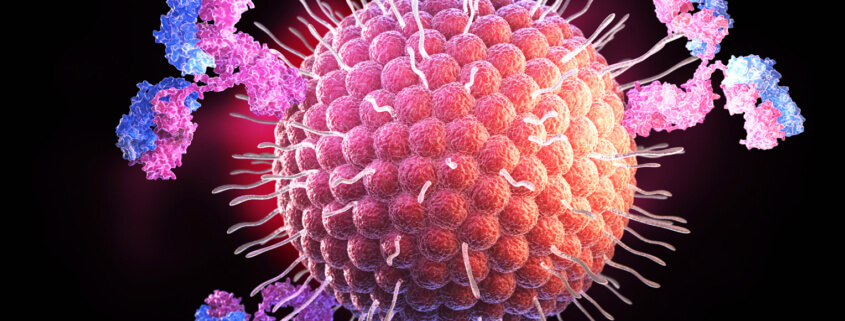INTRODUCTION: Herpes zoster (HZ) results from the reactivation of latent varicella-zoster virus (VZV) in the dorsal root ganglia. VZV can then move along the sensory nerves to the skin, causing inflammatory lesions in the peripheral nerves. Occipital neuralgia reaches the fronto-orbital area through trigeminocervical inter-neuronal connections in the trigeminal spinal nuclei. The report here by Takizawa et al.1, is one of the first case reports of HZ in the first branch of the trigeminal nerve followed by occipital neuralgia with HZ in the second cervical nerve area on the ipsilateral side.
DISCUSSION: This case involves a 47-year old female who complained of stabbing pain from the right temporal region to the parietal region. She had swelling in the right submandibular region and a rash on the occipital region. A blood test showed a very high antibody titer for VZV. In animal studies, it has been reported that stimulation of the greater occipital nerve region causes central sensitization of the first branch of the trigeminal nerve (Bartsch and Goadsby2). In an immunohistologic study, researchers demonstrated that the electrical stimulation of the first branch of the trigeminal nerve increased the expression level of c-fos in the dorsal horn of the upper cervical spinal cord (Goadsby and Hoskin3). Since the distribution of lesions in this case was in the lesser occipital nerve that originated from the cervical nerve (C2) and the first branch of the trigeminal nerve on the ipsilateral side, Takizawa hypothesized that the trigeminocervical complex was involved in the spread of neuroninflammation caused by VZV. The differential diagnosis for occipital pain includes temporomandibular disorder, migraine, cluster headaches, and the various diseases of the cervical spine, especially those involving the C2-3 nerve roots. The presence of myofascial trigger points in the posterior cervical muscles has been shown to mimic the pain of occipital neuralgia (ON). Therefore, all patients presenting with signs and symptoms of ON should be examined for myofascial trigger points. The patient was prescribed oral valacyclovir (Valtrex®) 1000 mg 3X daily for 7 days, which resulted in the complete remission of the pain, rash, and blisters.
CONCLUSION: This case demonstrated the relevance of the neuroanatomical connection between the trigeminal nerve and the upper cervical spinal cord. A thorough understanding of neuroanatomy would allow for anesthetic nerve blocking as a diagnostic aid, though great care should be taken when doing so, and the potential for a false positive should be considered.
REFERENCES:
- Takizawa, K., Z. Yan, J. Kakata, A. Young, J. Khan, M. M. Kalladka, and N. Noma. (2022) Trigeminal Herpes Zoster Transited to Ipsilateral Occipital Neuraliga. Neurol. Int. 14, 437-440. https://doi.org/10.3390/neurolint14020036
- Bartsch, T., P.J. Goadsby. (2002) Stimulation of the greater occipital nerve induces increased central excitability of dural afferent input. Brain 125, 1496-1509. https://doi.org/10.1093/brain/awf166
- Goadsby, P.J. and K.L. Hoskin. (1997) The distribution of trigeminovascular afferents in the nonhuman primate brain Macaca nemestrina: A c-fos immunocytochemical study. J. Anat. 190, 367-375. https://doi.org/10.1046/j.1469-7580.1997.19030367.x.
MKTG 1076 REV A



